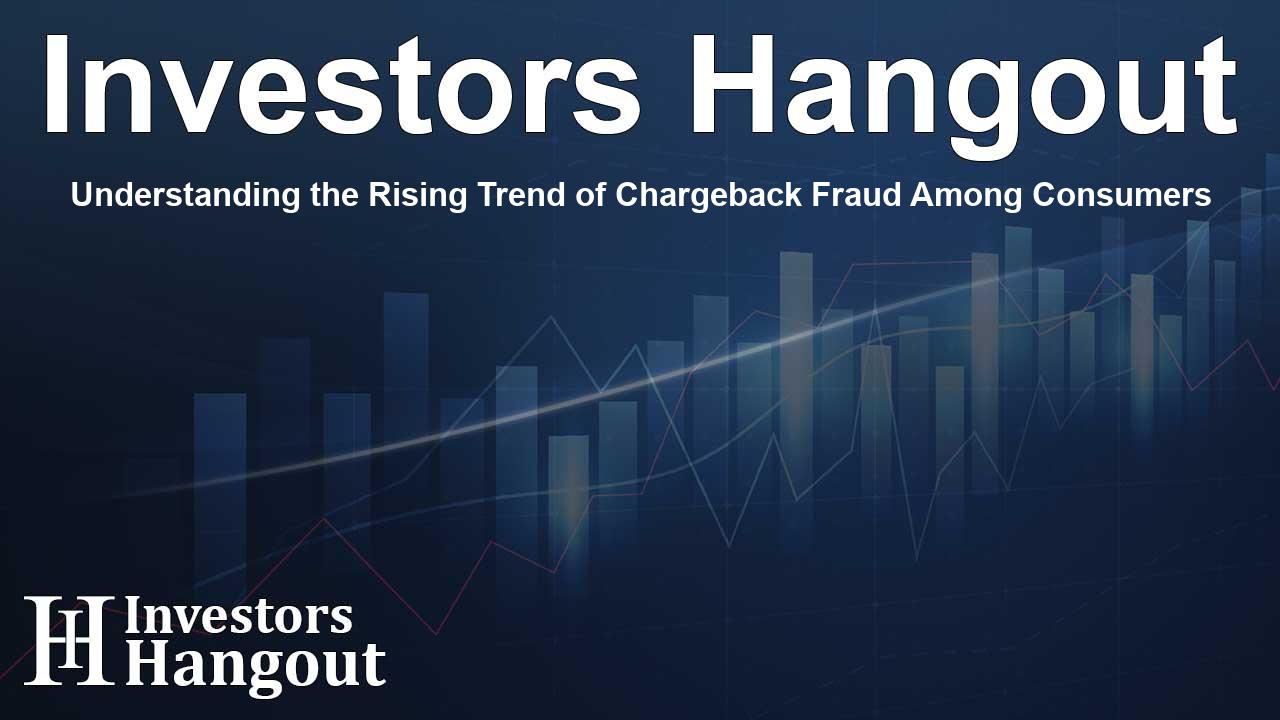Understanding the Rising Trend of Chargeback Fraud Among Consumers

Understanding Chargeback Fraud in Today’s Digital Economy
As online shopping continues to thrive, a troubling trend has emerged in the form of chargeback fraud, often referred to as ‘friendly fraud.’ Recent reports indicate a significant uptick in this practice among consumers, posing serious challenges for businesses across various sectors. The digital world is experiencing shifts, particularly with the rise of online transactions, and understanding this phenomenon is crucial for both consumers and businesses alike.
Insights from the Q4 2024 Digital Trust Index
According to the latest data from Sift, an AI-driven fraud prevention platform, the Q4 2024 Digital Trust Index highlights alarming patterns in online chargebacks. As e-commerce continues to escalate by an impressive 14%, projected to reach a staggering $4 trillion, businesses are grappling with increasing rates of dispute. In fact, the report reveals a shocking 78% increase in dispute rates from the previous year’s third quarter.
Sector-Specific Challenges
Certain industries have been disproportionately affected by this rise in chargeback fraud. For instance, the travel and lodging sector witnessed an astonishing 816% surge in chargeback rates, while e-commerce saw a 222% increase, and the digital goods and services sector experienced a 59% uptick. These numbers signal that businesses need to be increasingly vigilant, adapting their strategies to manage these growing threats effectively.
Why Are Consumers Resorting to Chargeback Fraud?
The motivations behind the rise in chargeback fraud are multifaceted. Economic pressures are compelling many consumers to seek ways to alleviate their financial burdens, leading them to exploit refund processes. A startling 27% of surveyed consumers reported encountering online advice on how to secure refunds, even when they are satisfied with their purchases. This trend indicates that some consumers view chargebacks as an easy route to save money.
A Generational Divide in Attitudes Towards Chargeback Fraud
Interestingly, there’s a discernible generational divide regarding the acceptance of chargeback fraud. Younger consumers, specifically Gen Z, reported a 42% engagement rate in such practices, starkly contrasting the 33% and 21% figures for Millennials and Generation X, respectively. Only 6% of Baby Boomers admitted to participating in chargeback fraud, showcasing the shift in attitudes particularly prevalent among younger generations.
Implications for Businesses
The rising acceptance of chargeback fraud raises significant concerns for businesses. Kevin Lee, SVP of Customer Experience, Trust & Safety at Sift, emphasizes that businesses are facing unprecedented challenges as both chargebacks and ‘true’ fraud rates climb. This situation mandates that companies invest in advanced AI technologies to fortify their defenses against evolving fraudulent tactics while maintaining a profitable growth trajectory.
Conclusion
As chargeback fraud becomes a norm rather than an exception, it is essential for businesses to navigate this complex landscape carefully. The pressures of economic uncertainty coupled with increasing e-commerce customers present a perfect storm for chargebacks to thrive. By implementing robust fraud prevention technologies and adopting a proactive approach to chargeback management, businesses stand a better chance at mitigating the impacts of this concerning trend.
Frequently Asked Questions
What is chargeback fraud?
Chargeback fraud, or friendly fraud, occurs when consumers dispute a charge with a bank after they have made a purchase, often claiming they did not authorize the transaction, even though they did receive the product or service.
How is e-commerce affecting chargeback rates?
The rapid growth of e-commerce has led to increased opportunities for chargeback fraud, as purchasing online offers consumers anonymity and ease when disputing charges.
Which industries are most affected by chargeback fraud?
Industries like online travel and lodging, e-commerce, and digital goods have seen the highest increases in chargeback rates, indicating that they are especially vulnerable to this fraud.
What can businesses do to combat chargeback fraud?
To combat chargeback fraud, businesses should invest in advanced fraud prevention technologies and develop strategies to closely monitor transactions and educate consumers about responsible purchasing practices.
Is chargeback fraud more common among younger generations?
Yes, studies have shown a stark generational divide, with younger generations like Gen Z being significantly more likely to engage in chargeback fraud compared to older generations.
About The Author
Contact Owen Jenkins privately here. Or send an email with ATTN: Owen Jenkins as the subject to contact@investorshangout.com.
About Investors Hangout
Investors Hangout is a leading online stock forum for financial discussion and learning, offering a wide range of free tools and resources. It draws in traders of all levels, who exchange market knowledge, investigate trading tactics, and keep an eye on industry developments in real time. Featuring financial articles, stock message boards, quotes, charts, company profiles, and live news updates. Through cooperative learning and a wealth of informational resources, it helps users from novices creating their first portfolios to experts honing their techniques. Join Investors Hangout today: https://investorshangout.com/
The content of this article is based on factual, publicly available information and does not represent legal, financial, or investment advice. Investors Hangout does not offer financial advice, and the author is not a licensed financial advisor. Consult a qualified advisor before making any financial or investment decisions based on this article. This article should not be considered advice to purchase, sell, or hold any securities or other investments. If any of the material provided here is inaccurate, please contact us for corrections.
